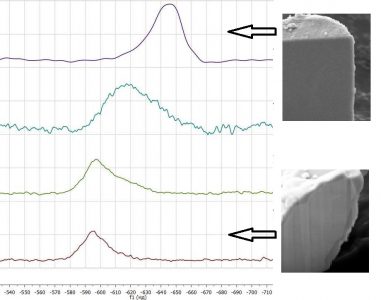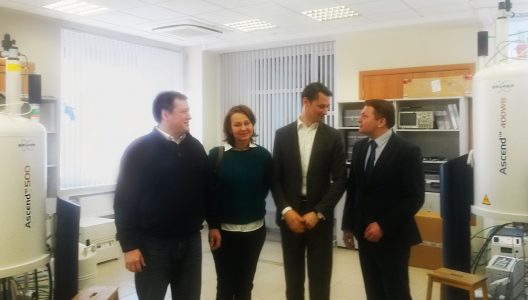T.L. Panikorovskii, S.V. Krivovichev, E.V. Galuskin, V.V. Shilovskikh, A.S. Mazur, A.V. Bazai
“Si-deficient, OH-substituted, boron-bearing vesuvianite from Sakha-Yakutia, Russia: a combined single-crystal, 1H MAS-NMR and IR spectroscopic study”
Eur. J. Mineral., 2016, 28, 931–941
DOI:10.1127/ejm/2016/0028-2570

Single crystals of Si-deficient vesuvianite with significant degree of hydrogarnet-type (SiO4)4−–(O4 H4)4− substitution occur as epitactic overgrowth on the surface of large wiluite crystals from the Wiluy River, Sakha–Yakutia, Russia. Electron-microprobe analysis revealed considerable Si-deficiency, Si ranging from 16.30 to 17.50 apfu. The crystal structure of the mineral has been refined in the P4/nnc space group, a = 15.5876(4), b = 11.8021(5) Å to R 1 = 0.028 for 1533 unique observed reflections. The refinement of the site-occupancy factors confirmed significant vacancy at the Z(1) and Z(2) sites (27% and 10%, respectively), with associated increase of the Z(1)–O and Z(2)–O bond lengths to 1.697 and 1.655 Å, respectively. The increased size of the Z(1) tetrahedra results in the compression of the X(1) polyhedra, while the expansion of the Z(2) tetrahedra is compensated by the compression of the X(4) polyhedra. As a result, the significant degree of the hydrogarnet-type substitutions does not have an essential influence upon the unit-cell parameters compared to the usual defect-free vesuvianite. Thermogravimetric (TGA) and differential scanning calorimetry (DSC) curves indicated two steps of the weight loss in the temperature ranges of 600–900°C (2.08 wt%) and 1014°C (2.22 wt%). The total weight loss is estimated as 4.30%, which is in good agreement with the total content of OH estimated as 13.72 apfu. The 1H solid state MAS-NMR demonstrates the presence of a strong additional line at 3.38 ppm compared to the usual vesuvianite, which is explained by the existence of the additional H(3) site. The infrared spectrum in the OH-stretching vibration region shows the additional (B′) absorption band at 3618 cm−1 typical for a hydrogarnet-type substitution.


